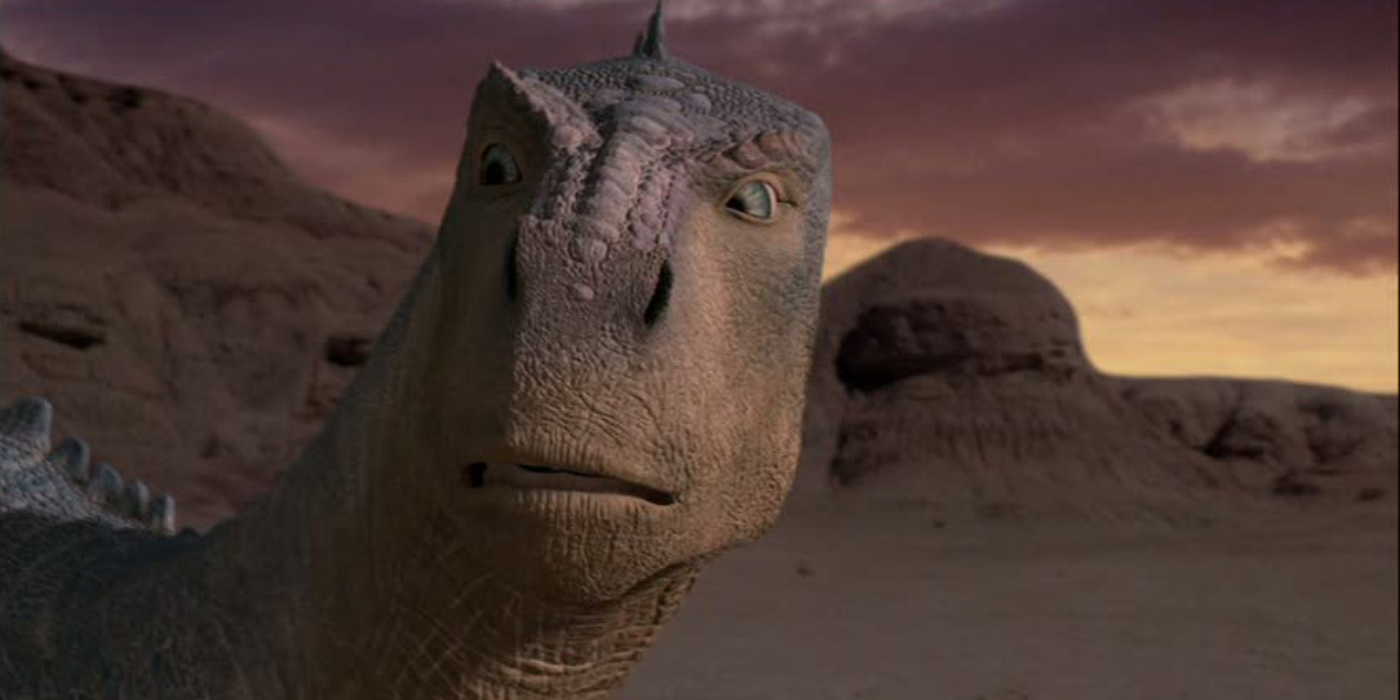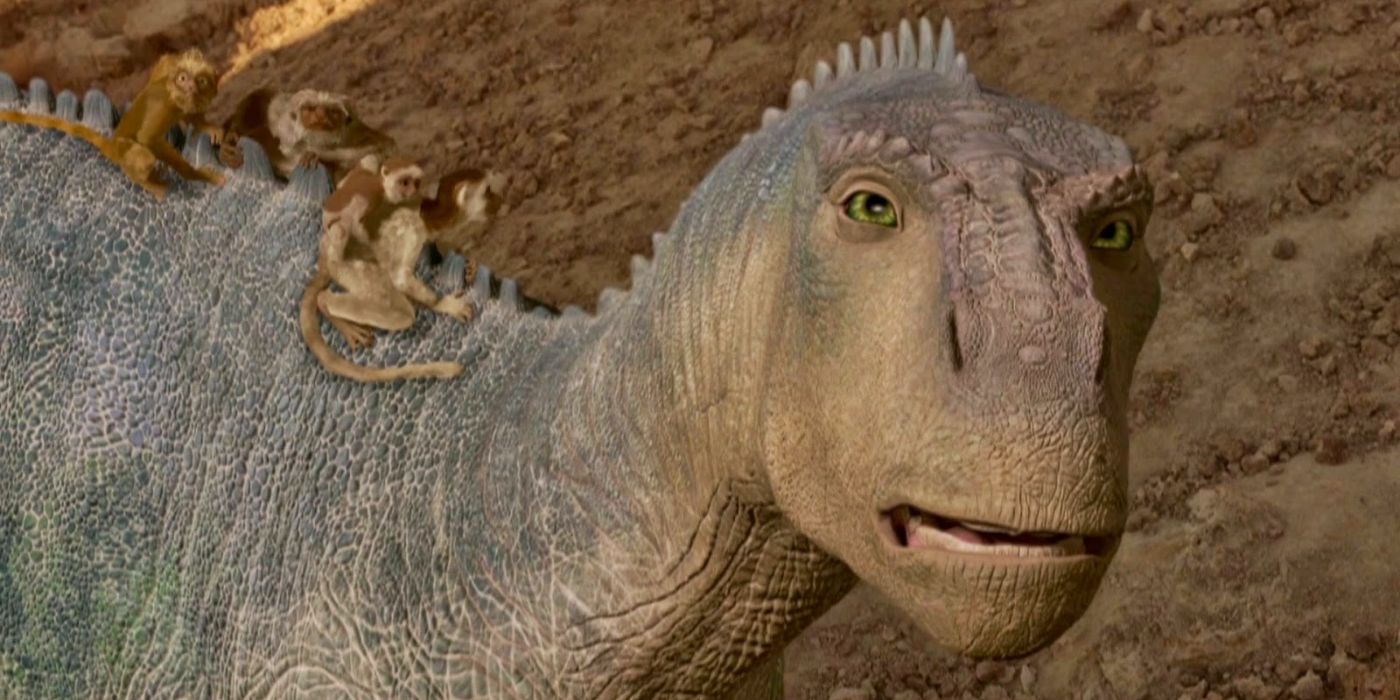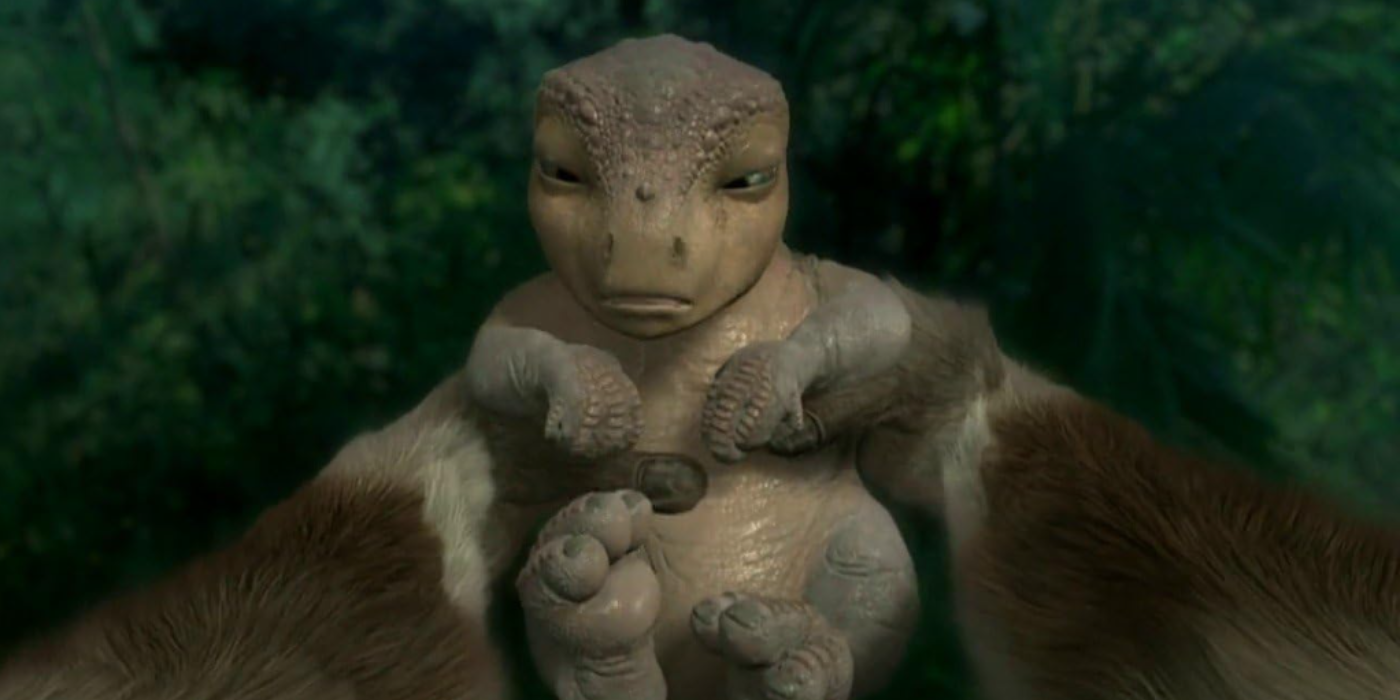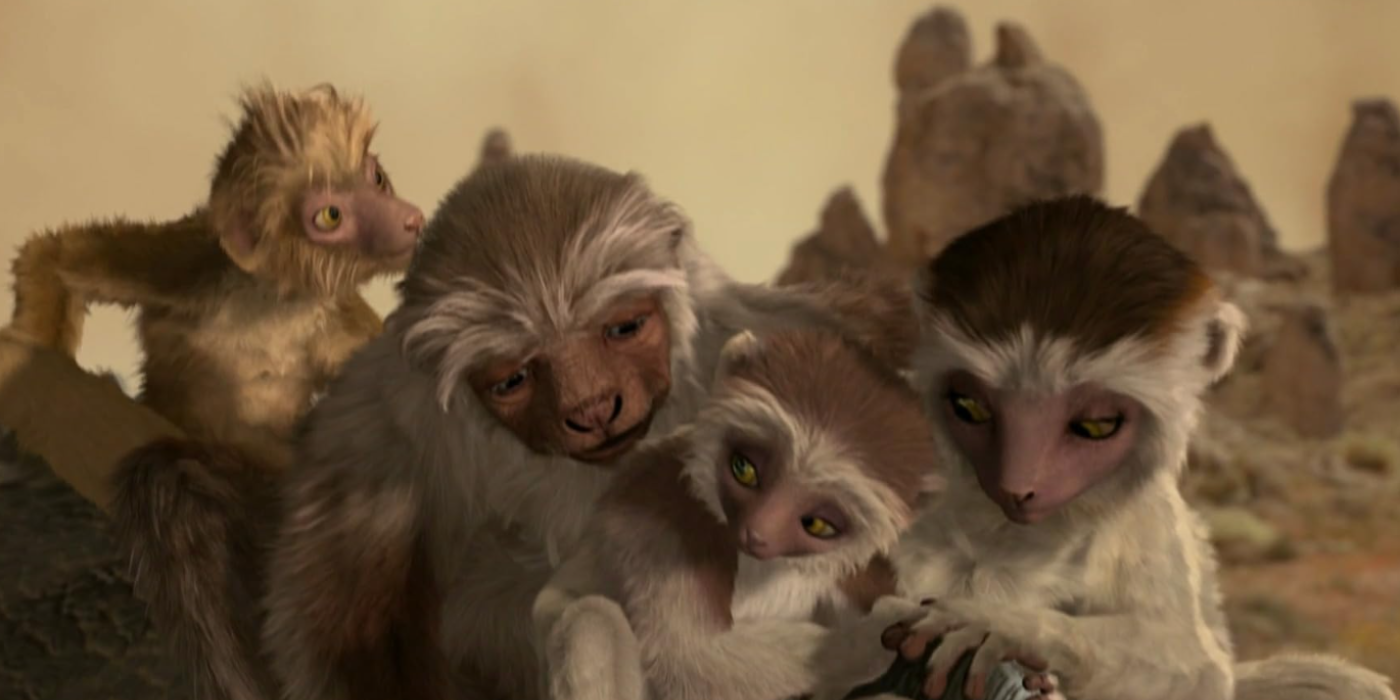
Although the studio is known for an abundance of successful animated movies, not all of them receive the acclaim they should. For instance, in the year 2000, Disney launched Dinosaur, a groundbreaking CGI project that pushed the boundaries of what visual effects could achieve in a family-friendly film. At first glance, it might seem like just another prehistoric survival tale, simple, straightforward, and tailored for younger viewers. However, upon closer examination, it showcases one of Disney’s most innovative and daring films from the early 2000s.
Showcasing actual world settings for computer-made characters, Dinosaur showcased an uncommon instance of daring and creativity from the studio. With a substantial budget and no musical elements, this high-profile feature film was built on an original idea instead of a popular franchise or fairy tale. This unique approach set it apart from the studio’s more conventional productions. Furthermore, its cutting-edge computer animations make Dinosaur one of Disney’s most daring cinematic experiments to date.
Dinosaur was Disney’s First CGI Movie
Dinosaur Was Created Using a Mix of Live-Action Shots & CGI Characters



- Dinosaur was the first feature-length Disney film created by CGI by Disney’s own team.
- Disney used innovative tools to recreate the dinosaurs’ skin and the lemurs’ fur, which were again used in later films.
There’s been a bit of debate about which movie marked the beginning of Disney’s ventures into computer-generated imagery (CGI). Some believe it was released in 1995, while others argue that it came out a decade later. The truth is somewhat blurred. While Toy Story was the first fully CGI-animated film under the Disney label, Pixar was responsible for its production and animation. Disney merely distributed the movie. Chicken Little, on the other hand, was an in-house creation by Disney, entirely produced without Pixar and animated by Disney’s own team. However, it’s important to note that Dinosaur was the first feature-length film to be created entirely with CGI, using live-action backgrounds and computer-generated characters.
In terms of storylines, “Dinosaur” sticks to traditional themes, but it’s a fun movie suitable for the whole family. The protagonist, Aladar (played by D.B. Sweeney), is an Iguanodon who was raised by lemurs. After a meteor strike devastates their home, Aladar and his surviving kin join a group of dinosaurs on a journey to find safety. The story doesn’t present anything particularly innovative or complex; it’s a typical survival adventure following a predictable formula.
However, what truly sets “Dinosaur” apart is its exceptional animation quality. Despite the conventional plot, the visual effects are stunning and worth watching.
Dinosaur differs from many animated films as it blends live-action and computer-generated imagery (CGI) more than 2019’s The Lion King, which had only one non-digital shot. Unlike other CGI characters, the settings in Dinosaur were based on real-life locations from around the world, such as California, Florida, Hawaii, Australia, and Venezuela. To seamlessly combine these authentic backdrops with digital creatures, Disney’s animation team collaborated closely with on-site crews who photographed these locations, which were then used by animators to create the final product.
In this project, the animators constructed 3D models and initial scene arrangements, which were then transmitted to help the camera teams determine the best framing for each shot. This close collaboration was so accurate that numerous final scenes were created by combining elements from various locations. To portray the world as a dinosaur would see it, the filmmakers devised a special tool called the Dino-cam. Designed to move at speeds of up to 30 miles per hour and rotate 360 degrees while suspended between adjustable towers, the Dino-cam allowed for shots that mirrored the actions of ancient beasts.
In its day, the computer-generated animation in the movie “Dinosaur” was exceptionally advanced, and much of it remains impressive even by today’s standards. Disney painstakingly recreated a prehistoric world with stunning realism for the time, from the intricate textures on the dinosaurs’ skin to their lifelike movements. What truly set this animation apart were the facial expressions. Disney’s team created custom software to give the characters an expressive range that rivaled human performers. Even dinosaurs without lips, such as Styracosaurus Eema (portrayed by Della Reese), conveyed emotion through their eye and facial movements. The film also introduced a patent-pending “Fur Tool” to animate the lemurs’ hair. By manipulating a few strands, animators could mimic fur behavior; this technology would later be used in Pixar films like “Monsters, Inc.” and others.
Dinosaur Influenced Disney’s Future in Animation
- Dinosaur came when Disney was experimenting with new animation techniques.
- Dinosaur was the first in-house animated film based on an original concept.
- The film was in the top 30 among Disney animated films at the time of its release.
In addition to its impressive technological feats, the release of Dinosaur was significant due to the pivotal moment it represented for Disney. At the dawn of the new millennium, Disney was grappling with an identity crisis, and the once-unstoppable success of their formula was beginning to wane. Musicals like Beauty and the Beast ruled the early ’90s, but later films such as Pocahontas, Tarzan, and Hercules failed to replicate the same commercial success. The Disney formula was starting to seem outdated, and competitors like Warner Bros. and DreamWorks were swiftly gaining ground.
The groundbreaking film “Toy Story” paved the way for new animation standards, prompting studios such as DreamWorks to create movies like “Antz” and “Shrek.” Simultaneously, Disney was implementing last-minute alterations to projects that were already in production. For instance, “Kingdom of the Sun,” initially a musical, underwent significant changes and ultimately evolved into a comedic film, marking a sharp departure from its originally planned theme.
In the midst of this transition, Disney unveiled the movie “Dinosaur,” a groundbreaking step since it was not only their debut CGI animated production but also the first in-house animated feature based on an entirely original idea, unrelated to previous characters or fairy tales. This daring endeavor was the costliest CGI film ever made at that time, with a whopping budget of $127.5 million. Although it received mixed criticism, “Dinosaur” managed to turn a profit, earning close to $350 million globally. Furthermore, it led to the renaming of Animal Kingdom’s “Countdown to Extinction” ride to “Dinosaur,” incorporating the film’s central character, Aladar.
One might find it astonishing that Dinosaur, released over two decades ago, still looks visually striking when compared to many of Disney’s more recent animated films. While movies such as Wish, Strange World, and even Encanto showcase impressive animation, they don’t quite match the grand scale and environmental realism that Dinosaur achieved in 2000. The film’s dedication to photorealism, particularly in its environments and creature movements, sets it apart from the more stylized CGI seen in today’s films.
In a way that many contemporary productions seem to miss, even the textures in this film are exceptional. Now, I’m not suggesting that modern movies lack visual appeal, but they often fail to provide the same level of immersion and realism as Dinosaur. One reason for its standout quality is its originality. Over the past two decades, Disney has predominantly focused on sequels and reboots. However, Dinosaur was a unique production. Unlike many of today’s films, it didn’t depend on nostalgia, fairy-tale themes, or famous voices to attract audiences. Instead, it presented an original tale using innovative techniques at a time when Disney was still willing to take risks.
The period of experimentation with traditional animation at Disney was short-lived, as their films faced continuous struggles. Movies like “The Emperor’s New Groove,” “Atlantis: The Lost Empire,” and even the comparatively successful “Lilo & Stitch” didn’t manage to surpass Pixar’s box office successes. By 2004, after “Home on the Range,” Disney decided to pause their 2D animation projects indefinitely.
2005 marked the point when the studio completely transitioned to Computer-Generated Imagery (CGI) with the movie “Chicken Little”, a financially motivated project that fell short in terms of creativity and artistic visual appeal compared to “Dinosaur”. Reflecting on this 25 years later, “Dinosaur” continues to be a technical feat that often gets overshadowed in Disney’s film catalog. Though its storyline didn’t receive the recognition of other renowned Disney productions, “Dinosaur” propelled the studio into uncharted territories. Amidst a lineup filled with sequels, remakes, and brand extensions, “Dinosaur” stands as a daring and unique film that remains remarkable even 25 years later.
Read More
- Brawl Stars December 2025 Brawl Talk: Two New Brawlers, Buffie, Vault, New Skins, Game Modes, and more
- Clash Royale Best Boss Bandit Champion decks
- Best Hero Card Decks in Clash Royale
- Call of Duty Mobile: DMZ Recon Guide: Overview, How to Play, Progression, and more
- Clash Royale December 2025: Events, Challenges, Tournaments, and Rewards
- Best Arena 9 Decks in Clast Royale
- Clash Royale Best Arena 14 Decks
- Clash Royale Witch Evolution best decks guide
- Brawl Stars December 2025 Brawl Talk: Two New Brawlers, Buffie, Vault, New Skins, Game Modes, and more
- Decoding Judicial Reasoning: A New Dataset for Studying Legal Formalism
2025-05-29 04:24